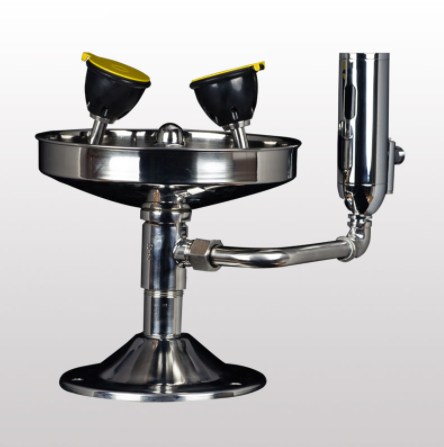The Installation Process of Bohua Combined Eyewash Stations: A Step-by-Step Journey
In the high-stakes world of the petroleum and chemical industries, and within the meticulous confines of laboratories, the eyewash station is not just a tool, but a guardian of safety. At Bohua, we’ve been crafting these sentinels of security for over a decade, and today, we’re taking you through the installation process of our combined eyewash stations, a vital piece of safety equipment that comes in various forms, including portable, floor-standing, and freeze-proof models, each tailored to different work environments.
The Importance of Proper Installation
The eyewash station must be installed close to hazardous work areas, ready to be accessed swiftly in the event of an accident. Unobstructed and direct access is crucial, with the distance to the eyewash station being a straight line, avoiding any detours, to ensure the quickest possible reach. This is not just an installation—it’s a lifeline being put in place. We at Bohua offer free training on the use and installation of our eyewash stations, ensuring that your team is not only equipped with the device but also with the knowledge to use it effectively.
Step-by-Step Installation Process
1. Site Selection: Choose a location near danger zones, typically within a 10 to 15-meter range and no more than 10 seconds’ walk from any point where chemical exposure might occur .
2. Base Installation: Secure the eyewash station’s base using expansion bolts or other suitable methods, ensuring stability and a firm ground connection.
3. Pipeline Connection: Connect the inlet and outlet to a potable water source with a pressure of at least 0.2MPa. Pay attention to pipe sizes and interface types, typically 1-1/4 inches, and use thread sealant like Teflon tape or stainless steel glue to ensure no leaks .
4. Component Assembly: Install components such as the showerhead, eyewash nozzle, and dust covers according to the instructions, ensuring tight connections without leaks. The showerhead should typically be installed to the left of the eyewash nozzle at a 45-90 degree angle .
5. Regular Maintenance and Inspection: Conduct weekly cleaning and checks to ensure the station is in good condition and ready for use .
6. Operational Guidance: Train workers on how to properly use the safety equipment, including how to activate and deactivate the eyewash station and adjust the shower direction .
7. Freeze Protection: In cold regions, take necessary measures to prevent pipes and faucets from freezing, such as using anti-freeze compounds or electrically heated eyewash stations .
8. Accessibility and Obstacle-Free: Keep the rescue point clean and free of obstacles to ensure quick access in emergencies. The eyewash station should be clearly visible and easily reachable .
9. Rinsing Duration: In case of emergency use, the eyewash station should be used for a minimum of 10 to 15 minutes to ensure thorough flushing of harmful substances .
Bohua’s Commitment to Quality and Service
At Bohua, our professional design engineers customize eyewash stations based on your site’s specific environment. We have earned the trust and support of numerous manufacturers with our professional quality and outstanding service, continuously improving and innovating. If you’re interested in learning more about Bohua’s eyewash station products, you can reach out to us. Our consultation hotline is ready to answer your call at: 021-51693115.
Email: bohuasafety@gmail.com
WhatsApp: +8618917119171
We are dedicated to providing you with the best eyewash station solutions, ensuring the safety of your workforce is never compromised. Reach out to us for any inquiries or concerns regarding your eyewash station requirements. Your safety is our top priority!
Post time: Nov-13-2024


